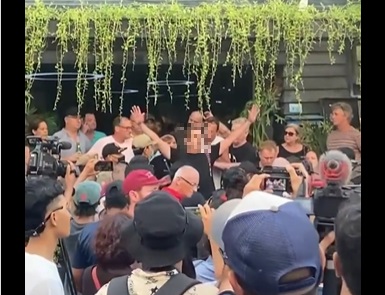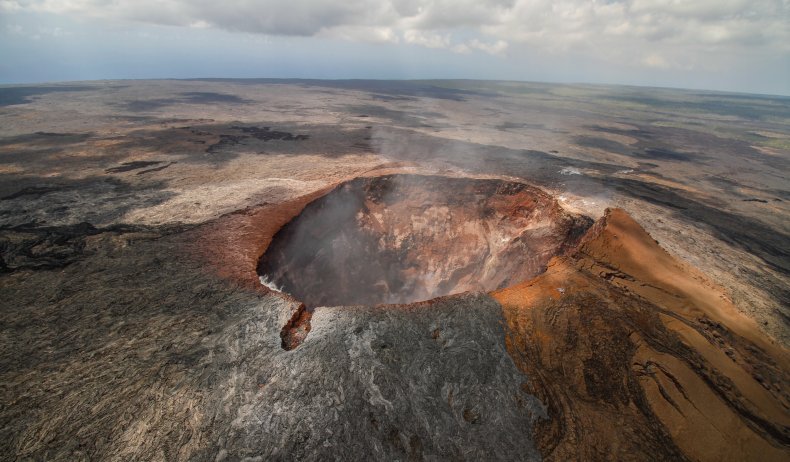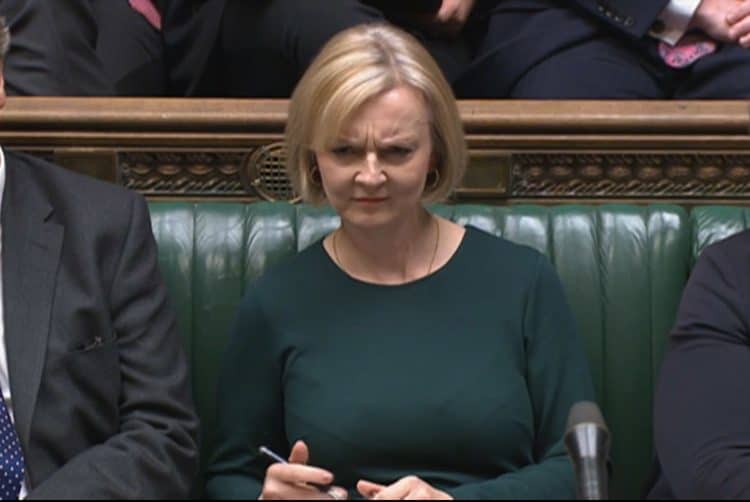Iran has been rocked by weeks of protests following the death of Mahsa Amini in custody.

Published On 13 Oct 2022
Iran’s judiciary chief has ordered judges to issue harsh sentences for the “main elements of riots” as protests continue over the death of Mahsa Amini, a young woman who died in custody nearly a month ago,
“I have instructed our judges to avoid showing unnecessary sympathy to main elements of these riots and issue tough sentences for them while separating the less guilty people,” the Iranian semi-official Students News Agency quoted Gholam-Hossein Mohseni-Ejei as saying on Thursday.
Mohseni-Ejei had previously ordered courts across the country to fast-track the cases of those arrested.
The protests started in mid-September after Amini, 22, died while in the custody of Iran’s so-called “morality police” for an alleged breach of the country’s strict dress code for women.
A report last week by the medical examiner’s office did not specifically mention the cause of Amini’s death but said she had a brain tumour operated on when she was eight, and no blows were dealt to her head or other organs.
Amini’s family have refuted the authorities’ account that she was not beaten, and has also questioned the validity of the coroner’s report.
Her death triggered the biggest protests in Iran since 2019 when a surprise move to ration fuel and raise prices sparked unrest.
Last week, Majid Mirahmadi, deputy for security and police affairs at the interior ministry, had warned that “anyone who is arrested at the scene of the riots will not be freed under any circumstances until the time of their trial, which will be held quickly and will issue assertive and deterring sentences”.
Dozens of people have so far been indicted in connection with “riots”, while stringent internet restrictions continue.
Iranian President Ebrahim Raisi on Thursday accused the United States of resorting to a “policy of destabilisation” against Iran.
“Following the failure of America in militarisation and sanctions, Washington and its allies have resorted to the failed policy of destabilisation,” Raisi said at a summit in Kazakhstan, according to his office.
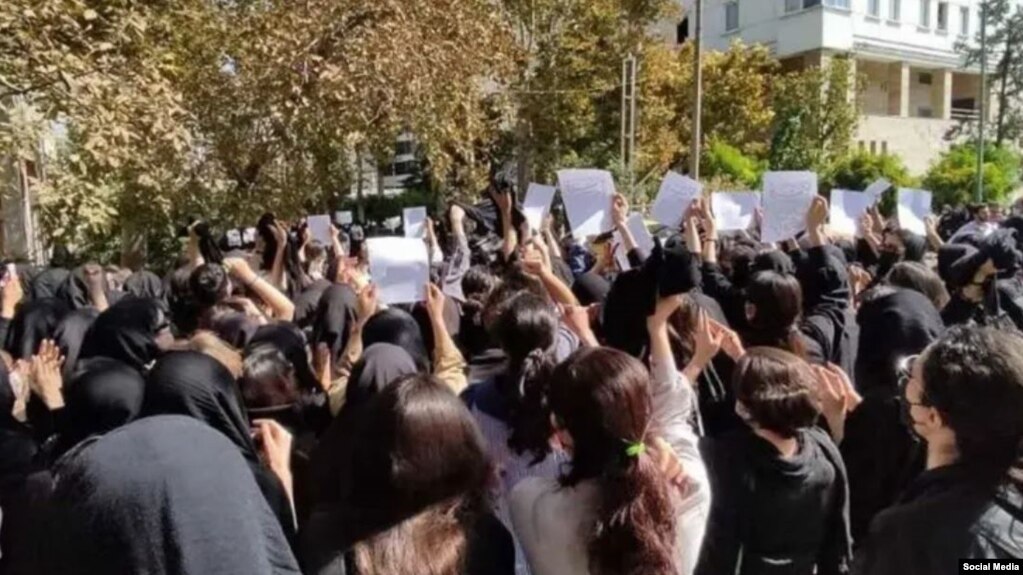
In a sign Iran's government is intensifying its crackdown on protesters angered by the death of a young woman while in police custody for allegedly improperly wearing a hijab, the head of the country's judiciary said "tough sentences" should be issued to those apprehended by police.
A wave of protests has swept across the country following the death Mahsa Amini last month. The 22-year-old died three days after being taken into custody by the morality police for allegedly violating Iran's strict law mandating women wear a hijab, or headscarf, when in public.
Her supporters and family say she was beaten during her arrest, while officials have said she had "underlying diseases."
"I have instructed our judges to avoid showing unnecessary sympathy to main elements of these riots and issue tough sentences for them while separating the less guilty people," the state ISNA news agency quoted Gholamhossein Mohseni Ejei as saying on October 13.
Iran Human Rights said on October 12 that at least 201 people, including 23 children, have been killed in the protests that have rocked Iran, and the Oslo-based group warned that more fatalities are likely in a continued "bloody crackdown."
The Iranian government has imposed a near-total Internet shutdown to try and quell the protests.
U.S. Encourages Technology Companies To Help Iranians Circumvent Internet Outages
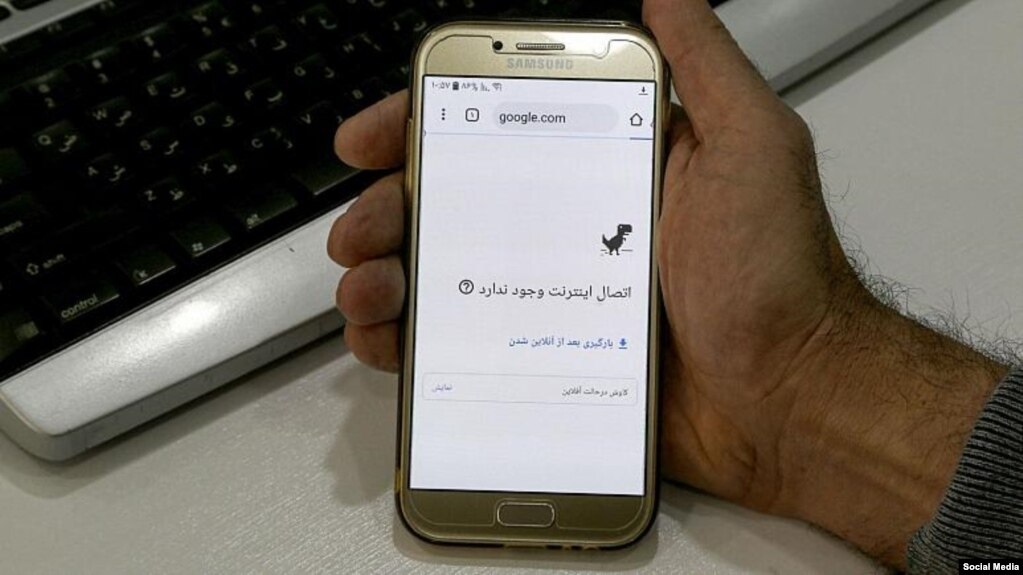
October 13, 2022
By Hannah Kaviani
Top U.S. officials have met with representatives of technology companies to encourage them to work on ways to facilitate Internet access in Iran after a licensing change freed up the use of software and other technology used to circumvent Internet blockages.
The United States issued a general license for such technologies last month and says they can be used by Iranians amid a crackdown on antigovernment protests.
U.S. Deputy Secretary of State Wendy Sherman said on October 12 that Iranian authorities have blocked Internet access amid the violent protests to suppress the Iranian people and keep human rights abuses out of the eye of the international community.
The general license, known as a GL D-2, opens the door for technology companies to provide people in Iran the tools they need to circumvent Internet shutdowns. Several U.S. technology companies are already providing new services to Iranians under the license, Sherman said.
Sherman spoke at a roundtable discussion in Washington with global technology companies on increasing access to communication tools for Iranians. The event was convened by the Global Network Initiative, a nongovernmental organization that focuses on Internet freedom issues.
The Iranian government has imposed a near-total Internet shutdown to try and quell the protests, which according to one human rights organization have left more than 200 people dead.
The protests broke out after the death of 22-year-old Mahsa Amini, who was taken into custody last month for allegedly wearing a hijab improperly. Eyewitnesses say Amini was beaten, while officials have said she died of illness, though they have not provided any evidence to back up their claim.
Sherman thanked the companies for taking the initiative to supply the tools, saying this is a moment of opportunity to help connect the Iranian people.

Iranian Officials Say Student Protesters Arrested, Sent To Reeducation Camps
"As more technology companies offer them software, services, and hardware, the Iranian people's ability to communicate with each other and their digital ties to the rest of the world will strengthen. And it will become more costly for their government to sever access in the future," she said.
She added that as more Iranians gain access to the latest software and services that meet global standards for digital security and anti-surveillance technologies they can better protect themselves from government crackdowns.
Deputy Special Envoy Jarrett Blanc, who also spoke at the roundtable discussion, said the U.S. government is making efforts to hold the Iranian government accountable for the acts of violence and the Internet shutdown, including imposing sanctions on organizations and individuals responsible.
It is important to see the GL D2 as part of the U.S. response to the protests, Blanc said. Before the GL D-2 was granted there were ways that sanction policy complicated the Iranian people’s access to the Internet, which was not the objective.
The GL D-2 is a crucial pillar of this response because it means U.S. regulations are not standing in the way of Iranians accessing a free flow of information and access to the Internet, he said.
Iran Ratchets Up Crackdown Against Protesters, Several Deaths Reported
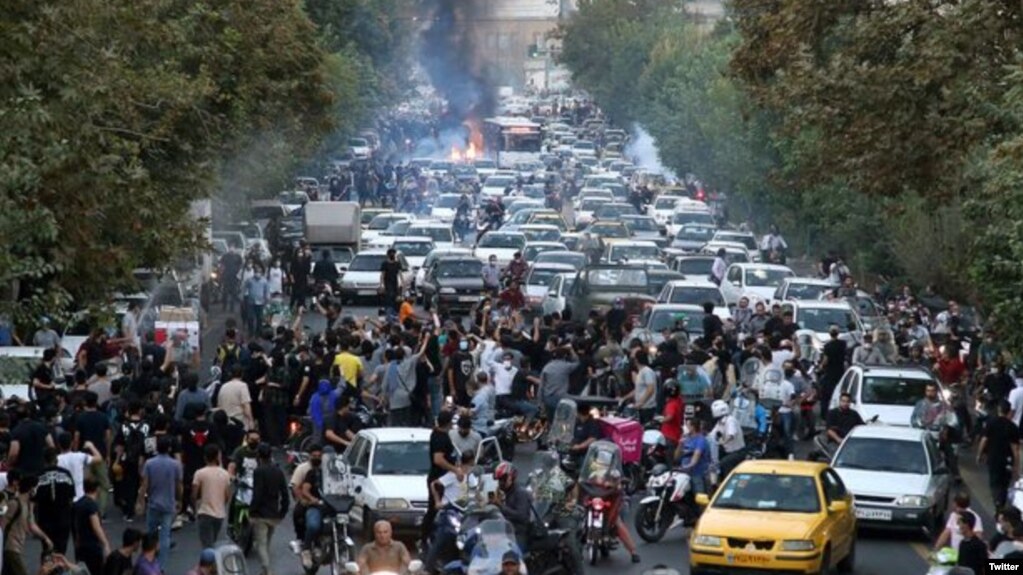
October 13, 2022
By RFE/RL's Radio Farda
Iranian security forces continue to ratchet up their crackdown on protests across the country as they try to quell unrest sparked by last month's death of a young woman while in police custody over how she was wearing a head scarf.
Demonstrations on October 13 took place in various cities after reports overnight that several people were killed in clashes with security forces in the country's Kurdish regions.
The Hengaw rights group, which reports on these regions, called for international aid organizations such as Doctors Without Borders and the International Committee of the Red Cross to be given access to the areas amid "intense violence" between protesters and security forces.
On October 13, the Kurdistan Human Rights Network, a group that monitors Kurdish-inhabited areas of western Iran, announced the death of three protesters by security forces in the cities of Sanandaj and Kermanshah.
“At least 48 other protesters were injured in different cities and the condition of one person was reported to be critical,” the group added.
Amini's death came three days after she was taken into custody after being detained by the so-called Morality Police.
Eyewitnesses say Amini, who was of Kurdish background, was beaten, while officials have said she died of illness, though they have not provided any evidence to back up their claim.
Again on October 13, Iranian President Ebrahim Raisi blamed the United States for the unrest, accusing Washington and its allies of resorting to "the failed policy of destabilization."
Despite a near-total Internet shutdown by authorities, Iranians were still posting calls on social media for street protests with the aim of supporting people in the western Iranian city of Sanandaj after Iran's security forces launched "an all-out military attack" on protesters.
In a video sent to RFERL's Radio Farda, security agents could be seen violently beating a protester in Tehran.
Another video posted on social media from the western city of Ilam showed police forces pursuing protestors.
Meanwhile, striking workers have been reported in several cities across the country in recent days, especially in southern areas where Iran's oil industry is located, one of the few sectors of the economy able to bring in money for the government.The Free Union of Iranian Workers announced on October 12, that more than 30 contract workers in the Asalouyeh petrochemical plants have been arrested by security forces for their protests.
Written by Ardeshir Tayebi based on an original story in Persian by RFE/RL's Radio Farda
More than 200 killed during fierce
crackdown by Iranian authorities
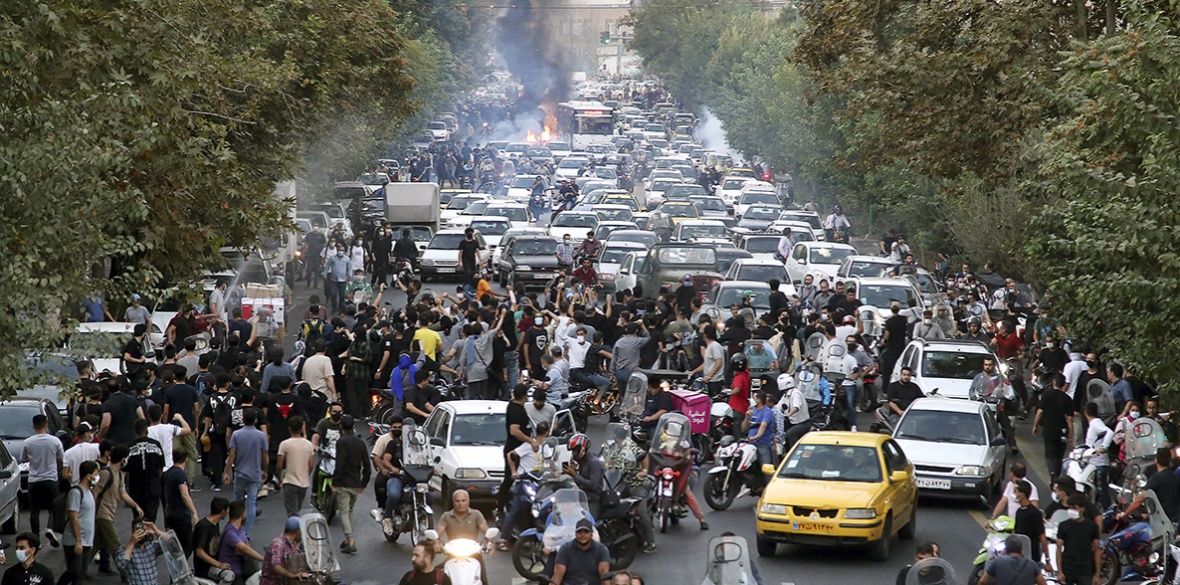
A protest over the death of a woman who was detained by the morality police, in downtown Tehran, Iran, September 21, 2022MORE than 200 people have been killed during a fierce crackdown by Iranian authorities, as women in the country continue to protest and win support across the world.
Iranian security forces have mounted a huge clampdown on protests across the country, sparked by the death in September of Mahsa Amini at the hands of the so-called morality police for an alleged breach of the Islamic republic’s strict dress code for women.
Widespread protests across Iran on Wednesday were marked by security forces’ use of guns and beatings.
Oslo-based group Iran Human Rights is reporting that 201 people have so far been killed during the protests since the retaliation by the Iranian regime began.
Tehran Youth, presumed to be a group of young activists who have taken the lead in current anti-government protests, had issued the call for Wednesday’s protests after security forces used military weapons against protesters in the Kurdish city of Sanandaj earlier this week.
Multiple reports by social media monitoring groups said that there was a near-total internet shutdown in major cities, not only for mobile phones but also landline home connections.
But despite the actions of the government, reports emerged of protests taking place in Mashhad, Esfahan, Rasht, Keramn, Chabahar and Sanandaj, Arak and other cities and towns.
Reports by labour groups from southern Iran said that security forces were deployed in large numbers around oil and petrochemical facilities to prevent the continuation of strikes and protests by workers that started on Monday.
Despite the clampdown by the authorities, the first cracks have started to appear among Iran’s political elite over the women-led protests.
Ali Larijani, former speaker of the Iranian parliament, called for a re-examination of the enforcement of compulsory hijab law and an acknowledgment that the protests have deep political roots, and are not simply the product of US or Israeli agitation.
The protests have sparked a wave of solidarity across the world.
Veteran political activist Professor Angela Davis said: “I want to offer my heartfelt solidarity to all those in Iran who have decided that Mahsa Amini’s death at the hands of the Islamic republic shall not be in vain.”
“I want to thank all those whose militant refusal, directed at the regime, has created the occasion for Mahsa Amini’s name to reverberate around the world,” she added.
MORNINgstar
MORE than 200 people have been killed during a fierce crackdown by Iranian authorities, as women in the country continue to protest and win support across the world.
Iranian security forces have mounted a huge clampdown on protests across the country, sparked by the death in September of Mahsa Amini at the hands of the so-called morality police for an alleged breach of the Islamic republic’s strict dress code for women.
Widespread protests across Iran on Wednesday were marked by security forces’ use of guns and beatings.
Oslo-based group Iran Human Rights is reporting that 201 people have so far been killed during the protests since the retaliation by the Iranian regime began.
Tehran Youth, presumed to be a group of young activists who have taken the lead in current anti-government protests, had issued the call for Wednesday’s protests after security forces used military weapons against protesters in the Kurdish city of Sanandaj earlier this week.
Multiple reports by social media monitoring groups said that there was a near-total internet shutdown in major cities, not only for mobile phones but also landline home connections.
But despite the actions of the government, reports emerged of protests taking place in Mashhad, Esfahan, Rasht, Keramn, Chabahar and Sanandaj, Arak and other cities and towns.
Reports by labour groups from southern Iran said that security forces were deployed in large numbers around oil and petrochemical facilities to prevent the continuation of strikes and protests by workers that started on Monday.
Despite the clampdown by the authorities, the first cracks have started to appear among Iran’s political elite over the women-led protests.
Ali Larijani, former speaker of the Iranian parliament, called for a re-examination of the enforcement of compulsory hijab law and an acknowledgment that the protests have deep political roots, and are not simply the product of US or Israeli agitation.
The protests have sparked a wave of solidarity across the world.
Veteran political activist Professor Angela Davis said: “I want to offer my heartfelt solidarity to all those in Iran who have decided that Mahsa Amini’s death at the hands of the Islamic republic shall not be in vain.”
“I want to thank all those whose militant refusal, directed at the regime, has created the occasion for Mahsa Amini’s name to reverberate around the world,” she added.
MORNINgstar
Beyond the veil, Iran’s women at the mercy of men

By Jaime León
Tehran, Oct 6 (EFE).- The death of Mahsa Amini in police custody has sparked unprecedented protests against the obligatory headscarf laws in Iran but discrimination against women in the Islamic republic runs much deeper.
Women in Iran have comparatively greater access to work and education than in many neighboring countries but men still have the final say on the extent of women’s rights.
Patriarchal decision-making powers extend to marriage, whereby the mantle of superiority is passed from father to husband.
In Iran, women enjoy their greatest level of freedom when they are single adults, but it comes with caveats – they are prohibited from singing in public, driving motorbikes and attending football games.
Fathers hold veto powers over the marriage of their daughters, even when they are of adult age. Once a woman is married, she needs permission from her husband to study, work and obtain a passport, in accordance with the Islamic Republic of Iran’s civil code.
Written permission for a passport can be withdrawn at the whim of the husband, who can therefore prevent his wife from leaving the country.
A male partner has custody over a daughter until the age of nine and a son until 15, and can divorce more easily than a woman, who requires the approval of a judge, a male-only job in Iran.
The terms of a marriage can be negotiated ahead of time, and such contracts can include special circumstances guaranteeing the woman the right to a passport, to study, work and grant her custody of the children.
“My marriage contract allows me to work because that’s what I asked my husband before we married and he accepted,” an Iranian woman told Efe on the condition of anonymity. “For me, it was important to have more freedom.”
Iran’s officials underline how the situation for women in the country has improved since the post-revolution founding of the Islamic Republic of Iran in 1979.
According to the government, 97% of girls receive an education compared to 62% before the Islamic revolution and women make up 17% of senior level roles in work, compared to 3% in 1979.
Women also make up 59% of university students in Iran. In politics, however, things are different.
Of the 290 lawmakers in parliament, just 16 are women, none of whom hold a ministerial role.
The highest-ranking woman in Iran’s politics is Ensieh Khazali, who serves as vice president for family affairs.
Another blemish on Iran’s women’s rights is child marriage. Each year, 30,000 children under 14 are married each year, according to NGO estimations.
Iranian law stipulates that the minimum age for marriage is 13 for girls and 15 for boys, although the age limits can be lowered with parental and judicial permission.
Women are banned from a number of activities that men would take for granted.
The list of prohibitions includes attending football matches, a topic that returned to the international limelight when protester Sahar Khodayari self–immolated in 2019 after she was sentenced to six months in prison for disguising herself as a man to enter a stadium, a tactic used by many women.
In 2019, under pressure from the international community and FIFA, the Islamic Republic permitted 3,500 women to attend a game between Iran and Cambodia. It was the first time in 40 years that women were seen in a football stadium crowd.

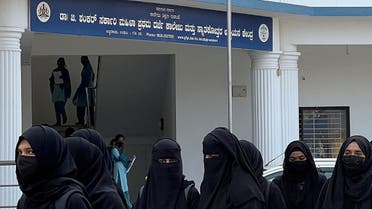
.jpg)
